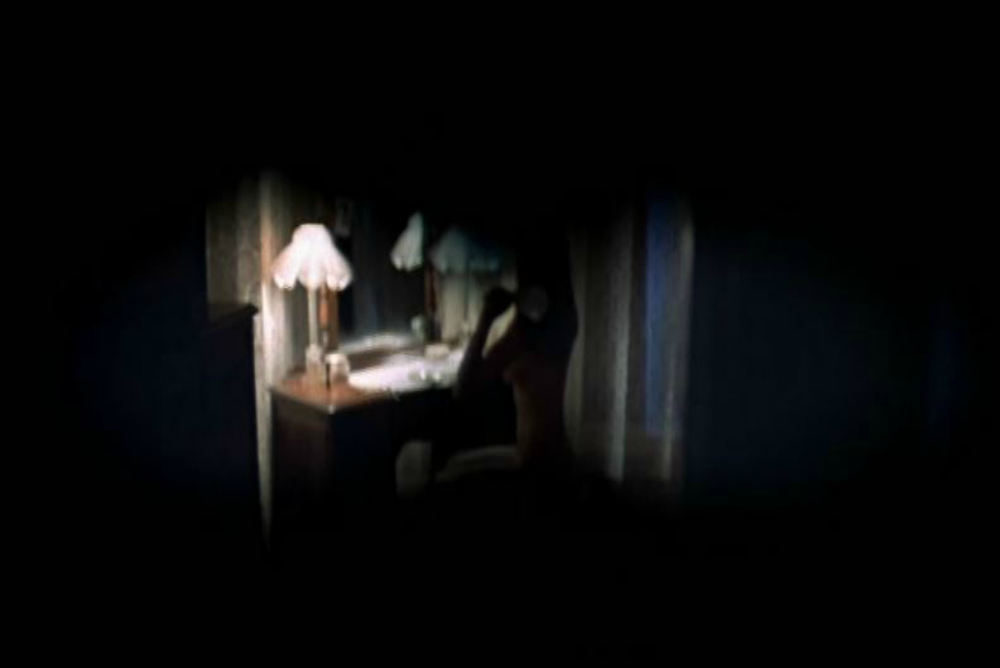Directed by Steven Spielberg, Jaws was released on June 20, 1975, and the story of its immense critical and popular success doesn’t need to be rehearsed here. Suffice it to say that not since Alfred Hitchcock’s 1960 film Psycho had a film so terrified audiences.
On every count, Jaws is a masterpiece. This summer marks its 40th anniversary—and it’s still as powerful as it was in 1975. Not least, for much of the film only minimally visible and identified by the unforgettably ominous theme music composed by John Williams, the shark itself is still utterly chilling. And the acting is brilliant—notably Roy Scheider as Chief Martin Brody, Richard Dreyfuss as oceanographer Matt Hopper, and the truly incomparable Robert Shaw as Quint.
 The film is divided into two parts that in many ways feel quite different: in the first, shark hunts humans; in the second, humans hunt shark. At first glance, it would seem that Jaws’ status as a horror film rests mostly on the first part. When Brody, Hooper, and Quint, just after the mid-point of the film, steer away from Amity to find and kill the shark, Jaws seems to transcend the strictures of the horror film, as Quint slowly reveals his burning, Ahab-like need for revenge, his existential terror in the face of death (and the shark), which he turns into a drive for destruction at whatever cost (Brody and Hooper dragged unwittingly and haplessly along). But then I realized that to say only the first part of Jaws is “horror” is to dramatically underestimate what the horror film is and does. Jaws is horror, from beginning to end.
The film is divided into two parts that in many ways feel quite different: in the first, shark hunts humans; in the second, humans hunt shark. At first glance, it would seem that Jaws’ status as a horror film rests mostly on the first part. When Brody, Hooper, and Quint, just after the mid-point of the film, steer away from Amity to find and kill the shark, Jaws seems to transcend the strictures of the horror film, as Quint slowly reveals his burning, Ahab-like need for revenge, his existential terror in the face of death (and the shark), which he turns into a drive for destruction at whatever cost (Brody and Hooper dragged unwittingly and haplessly along). But then I realized that to say only the first part of Jaws is “horror” is to dramatically underestimate what the horror film is and does. Jaws is horror, from beginning to end.
 So I want to make two (related) points, rooted in the film’s two distinct “movements,” about how Jaws occupies a critical place in the history of the horror genre. The first, taking up the shark-hunts-humans part, is that Jaws was integral to the emergence of the slasher film, which by most accounts originated in 1978 with John Carpenter’s Halloween. Halloween did not emerge out of thin air, however, and it was undoubtedly influenced by Psycho (1960), Texas Chain Saw Massacre (1974), and Black Christmas (1974), among others. But the more I thought about it, the more Halloween seems to be Jaws on land, complete with its human “shark.”[i]
So I want to make two (related) points, rooted in the film’s two distinct “movements,” about how Jaws occupies a critical place in the history of the horror genre. The first, taking up the shark-hunts-humans part, is that Jaws was integral to the emergence of the slasher film, which by most accounts originated in 1978 with John Carpenter’s Halloween. Halloween did not emerge out of thin air, however, and it was undoubtedly influenced by Psycho (1960), Texas Chain Saw Massacre (1974), and Black Christmas (1974), among others. But the more I thought about it, the more Halloween seems to be Jaws on land, complete with its human “shark.”[i]
The openings are strikingly similar, each about six minutes long, showing a teenage boy and girl who have some kind of casual encounter (explicitly sexual in Halloween) and who are then stalked by an unseen killer identified by sinister music. The boy escapes, by happenstance, and the girl is brutally murdered—her mutilated body haunting the rest of the film. These first six minutes of both films also inaugurate one of the signatures of the slasher—what Roger Ebert called the point of view of “a nonspecific male killing force.”[ii] We see events (specifically a shadowed naked female body) from the young Michael’s perspective—and from the shark’s.
The continued connection between the shark in Jaws and Michael Myers in Halloween is striking. Here’s Dr. Loomis describing his experience with Michael:
“I met him 15 years ago. I was told there was nothing left—no reason, no conscience, no understanding, even of the most rudimentary life or death, good or evil, right or wrong. I met this 6-year-old child with the blank, pale, emotionless face—and the blackest eyes—the devil’s eyes. I spent 8 years trying to reach him and then another 7 years trying to keep him locked up because I realized that what was living behind that boy’s eyes was purely and simply – evil.”
In Benchley’s novel, the shark is repeatedly described as having “black” and lifeless eyes.[iii] And in the film, when Quint is describing surviving in the water after the sinking of the U.S.S. Indianapolis, he says, “the thing about the shark . . . he’s got black eyes, lifeless eyes, like a doll’s eyes. When he comes at you, he doesn’t seem to be living—until he bites you, and then those black eyes roll over white . . .”
 Like the shark, with its “lifeless” black eyes and white face, roaming the deeps of the ocean, invisible till it strikes, Michael is often filmed in deep shots, hidden in the frame, with his white face and black eyes barely discernible—until he strikes.
Like the shark, with its “lifeless” black eyes and white face, roaming the deeps of the ocean, invisible till it strikes, Michael is often filmed in deep shots, hidden in the frame, with his white face and black eyes barely discernible—until he strikes.
 In Benchley’s novel, Brody explicitly voices the parallel between shark and “maniac,” lamenting the fact that Amity hasn’t been struck by, say, a hurricane, because at least that’s a discrete and explicable “event,” “something you can handle. They have beginnings and ends.” He says. “This is crazy. It’s as if there was a maniac running around loose, killing people whenever he felt like it. You know who he is but you can’t catch him and you can’t stop him. And what makes it worse, you don’t know why he’s doing it.”[iv] Brody may be talking here about the Great White Shark, but he is also perfectly describing Michael Myers.
In Benchley’s novel, Brody explicitly voices the parallel between shark and “maniac,” lamenting the fact that Amity hasn’t been struck by, say, a hurricane, because at least that’s a discrete and explicable “event,” “something you can handle. They have beginnings and ends.” He says. “This is crazy. It’s as if there was a maniac running around loose, killing people whenever he felt like it. You know who he is but you can’t catch him and you can’t stop him. And what makes it worse, you don’t know why he’s doing it.”[iv] Brody may be talking here about the Great White Shark, but he is also perfectly describing Michael Myers.
That Quint gives the speech, in the film, about the shark’s lifeless black eyes gets to my second point, and to why I think the second half of Jaws (humans hunt shark) expresses an even more fundamental aspect of the horror film than the first, with its more clear anticipation of slasher techniques and themes. The encounter of the three men with the shark, and Quint’s story of his five days in shark-infested water after the Indianapolis sank, embody humans’ confrontation with a devastating nonhuman force—a force that surpasses our ability to explain, understand, and often defeat. In Jaws, the implacable nonhuman is embodied by the shark; in the slasher film, the “shark” is incarnate as Michael Myers (and, later, Jason Vorhees).
Whether they render it in shark or human form, though, both Jaws and Halloween disclose the terrifying confrontation with the nonhuman (the inexplicable, irrational, and implacable) at the heart of horror. That the Great White becomes Michael Myers, moreover, suggests that there is no firm line between that nonhuman force and the human. The nonhuman that stalks the horror film, that the horror film is so devoted to exploring, is (also) in the human. Jaws made it clear, before the slasher sub-genre really got going, that what was at the heart of the slasher was this nonhuman force—and sometimes it looked human.
Jaws is available on blu-ray and all other formats at Amazon:
Follow Horror Homeroom on Twitter, Facebook, Instagram, and Pinterest.
[i] Martin Rubin has noted this similarity in Thrillers (Cambridge: Cambridge University Press, 1999), 161, 164, and I came across Rubin’s discussion in Richard Nowell’s great book, Blood Money: A History of the First Teen Slasher Film Cycle (New York: Continuum, 2011), 92-93.
[ii] Roger Ebert, “Why Movie Audiences Aren’t Safe Anymore,” American Film (March 1981), 56.
[iii] Peter Benchley, Jaws (New York: Ballantine, 2013), 254, 277, 287, 289, 301, 309.
[iv] Jaws, 217.













